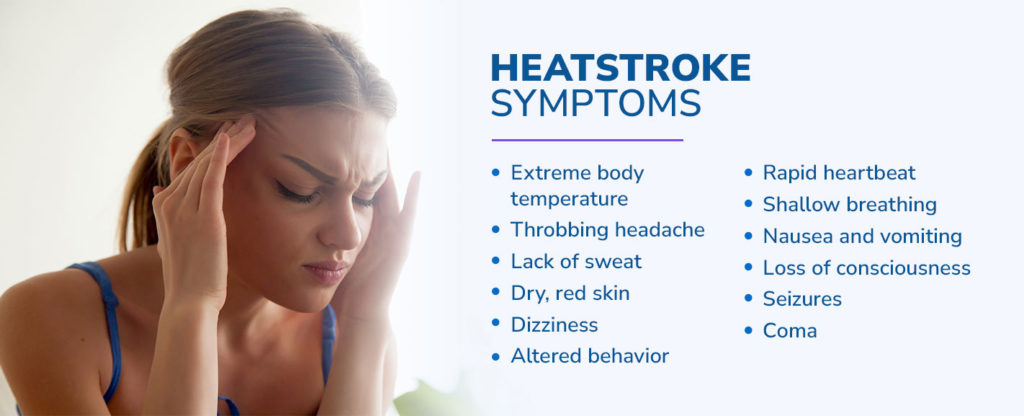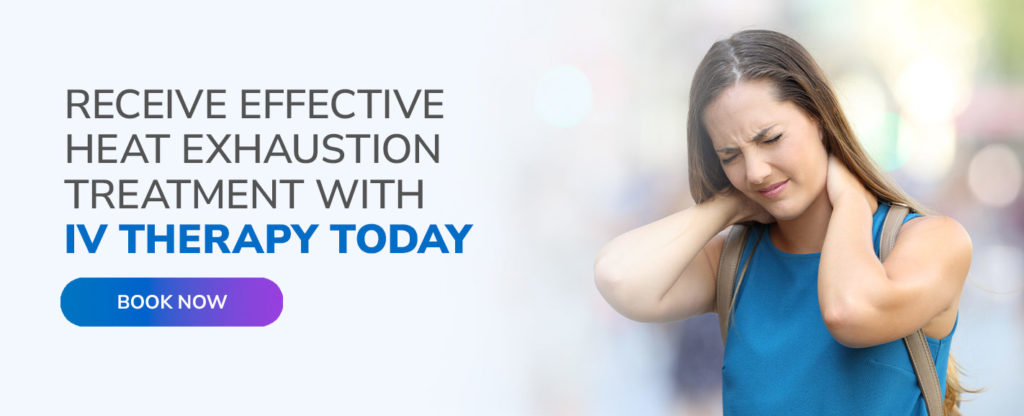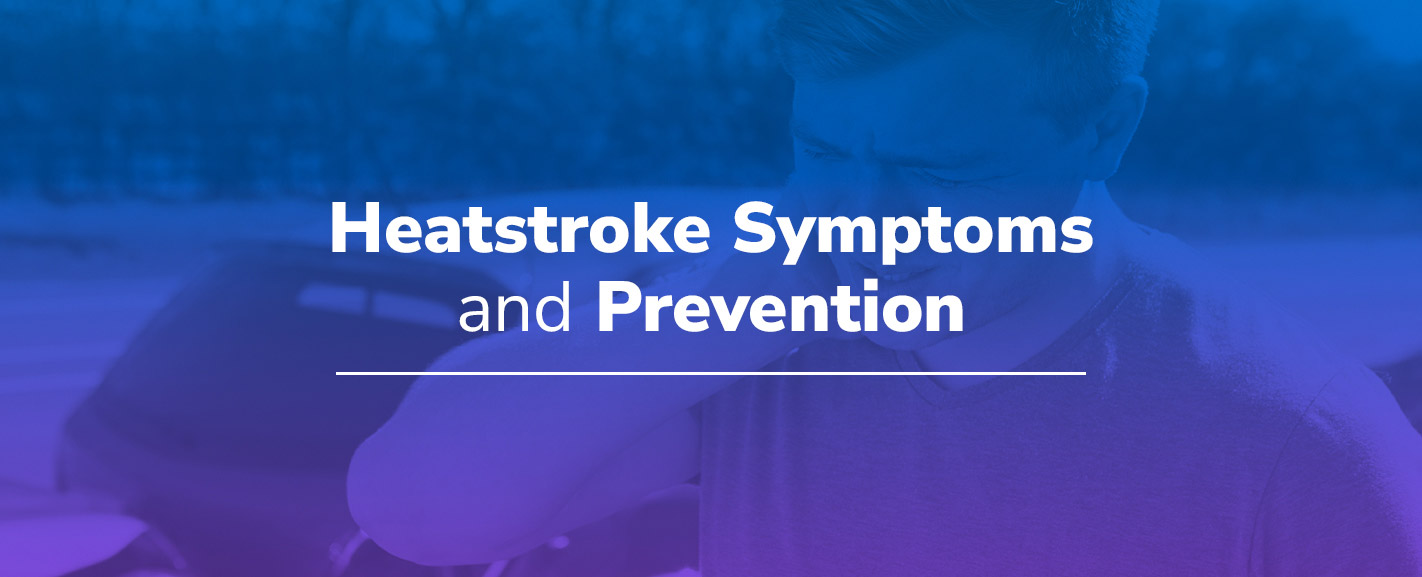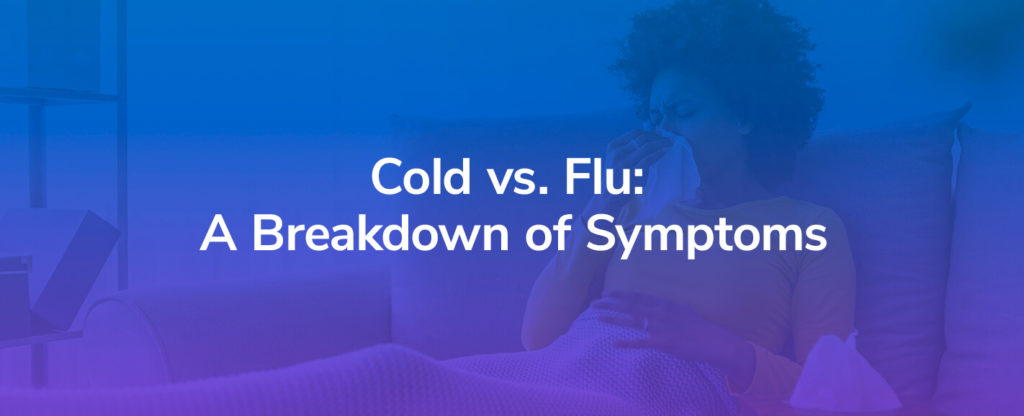Heatstroke is more than just excessive sweating — the effects of this hyperthermic condition can drastically impact the body in the long term. Heatstroke results from the body’s inability to control its temperature, resulting in rapid heat increase that inhibits the body’s ability to sweat and prevents it from cooling down. When heatstroke occurs, an individual’s core body temperature levels can rise to 106 degrees Fahrenheit or higher in as little as 10 to 15 minutes.
Heatstroke is the most serious heat-related illness and can result in a permanent disability or even death without the proper treatment. Luckily, you can manage the effects of heatstroke by learning to recognize heatstroke symptoms and knowing the appropriate treatment methods, including IV therapy for heat exhaustion. With this knowledge, you can better protect yourself and your loved ones from heat-related harm.
- Heatstroke Symptoms
- Heatstroke Treatment
- IV Therapy for Heat Exhaustion
- Receive Effective Heat Exhaustion Treatment With IV Therapy Today

Heatstroke Symptoms
The first step in heatstroke prevention and treatment is knowing the relevant symptoms. Because this condition is considered a medical emergency, it’s important you can identify the signs of heatstroke so you can dispatch for help quickly and accordingly.
Heatstroke often appears in the form of milder heat-related ailments, such as heat cramps, fainting and heat exhaustion, then progressively worsens into more serious symptoms. However, this isn’t always the case. Sometimes, heatstroke can transpire without previous signs of heat injury.
Some of the many symptoms that come with heatstroke include:
- Extreme body temperature: The body’s core temperature will typically rise to over 104 degrees Fahrenheit when afflicted with heatstroke, which you can gauge using a rectal thermometer.
- Throbbing headache: Heatstroke is often characterized by a pounding headache.
- Lack of sweat: Despite the body’s high core temperature, those with heatstroke are unable to sweat because of dehydration.
- Dry, red skin: Due to lack of sweat, the skin will feel exceptionally dry and hot to the touch. It will also look visibly red.
- Dizziness: Heat-related illnesses like heatstroke often cause individuals to become dizzy and lightheaded, possibly resulting in staggering.
- Altered behavior: Heatstroke can impact a person’s mental state and behavior, causing symptoms such as confusion, disorientation, irritability, agitation and delirium.
- Rapid heartbeat: Your pulse may increase considerably when affected by heatstroke, as heat stress causes the heart to exert tremendous energy in an attempt to cool the body.
- Shallow breathing: In addition to rapid heartbeat, heatstroke also results in fast, shallow breathing.
- Nausea and vomiting: Those experiencing heatstroke may feel sick to their stomach or begin vomiting.
- Loss of consciousness: Heatstroke sometimes causes subjects to fall unconscious due to reduced blood flow to the brain.
- Seizures: When an individual becomes severely overheated, their risk of having a seizure increases significantly.
- Coma: In more severe cases of heatstroke, subjects could potentially fall into a coma.
Heatstroke Treatment
After recognizing a person’s heatstroke symptoms, the first thing you should do is call 911 or transport the individual to the hospital to ensure that they receive the proper medical attention as quickly as possible. It’s crucial that those afflicted by heatstroke seek professional assistance to prevent symptoms from worsening. If you decide to call for help instead of traveling to the nearest medical facility, there are several things you can do in the meantime to manage the symptoms.
It’s essential to administer first aid to cool the person’s core body temperature down to 101 or 102 degrees Fahrenheit. Use a thermometer to monitor their temperature while performing the following procedures:
- Move to a cool area: Before the paramedics arrive, you can help the patient by moving them out of the heat and into an air-conditioned room before elevating their feet slightly. If there is no air-conditioned room available, transport the individual to a cool, shady area.
- Remove clothing: Cool the body further by removing all unnecessary clothing, such as sweatshirts, shoes, socks and jackets.
- Wet the skin: Try cooling the skin by wetting it with a sponge or spraying it with a hose. As you do this, try fanning air over the skin to enhance cooling effects.
- Apply ice: Pressing ice packs onto the neck, back, armpits and groin has proven highly effective for reducing heatstroke symptoms. Because these areas contain blood vessels that lie close to the skin’s surface, they are valuable cooling locations for reducing overall body temperature. Avoid using ice for older adults, young children, those with chronic illness and those whose condition resulted from vigorous exercise.
- Immerse in water: Next, try transporting the patient into a cool shower or bath.
- Deliver fluids: If the person experiencing heatstroke is awake, alert and able to swallow, you can give them fluids to drink. They can drink 1 to 2 liters over one to two hours. Make sure the person is sitting up to prevent choking.
- Administer rescue breaths: If the individual stops breathing, begin the rescue breathing process. This step is vital for treating children.
IV Therapy for Heat Exhaustion
Intravenous (IV) therapy for heat exhaustion has emerged as a popular treatment for heat-related illnesses like heatstroke. Through IV therapy, a health care professional uses a needle to deliver fluids directly into a patient’s bloodstream to help rehydrate the body and encourage health and recovery. IV drips contain a blend of various vitamins, minerals and medications that help alleviate symptoms and support the body.
Common uses for IV therapy include:
- Strengthening the immune system.
- Relieving cold and flu symptoms.
- Reducing morning sickness.
- Providing hangover relief.
- Alleviating headache and migraine effects.
- Aiding in athletic recovery.
Mobile IV therapy can help treat heat-related illnesses before the condition becomes life-threatening. When the body experiences heatstroke, it becomes severely dehydrated. IV fluids act as a fast and effective solution by instantly replenishing the body with fluids, electrolytes and other vital nutrients. IVs for heat-related illnesses are also beneficial in anticipation of fluid resuscitation.

Receive Effective Heat Exhaustion Treatment With IV Therapy Today
After recognizing the symptoms of heatstroke, you can get proper treatment with IV therapy from Mobile IV Medics. Our knowledgeable and experienced registered nurses are trained to deliver IV therapy services quickly, painlessly and reliably within the comfort of your own home. Our IV drip packages contain the vitamins and nutrients you need to feel revitalized and rejuvenated, whether you have a hangover, a cold, morning sickness or anything in between.
At Mobile IV Medics, we deliver immediate assistance to our customers with our 100% mobile IV therapy services to create the most comfortable and convenient experiences possible.
Contact us to learn more about our IV therapy for heat exhaustion today!





